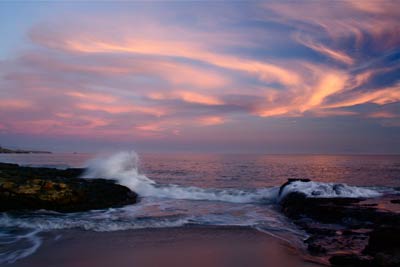All Nonfiction
- Bullying
- Books
- Academic
- Author Interviews
- Celebrity interviews
- College Articles
- College Essays
- Educator of the Year
- Heroes
- Interviews
- Memoir
- Personal Experience
- Sports
- Travel & Culture
All Opinions
- Bullying
- Current Events / Politics
- Discrimination
- Drugs / Alcohol / Smoking
- Entertainment / Celebrities
- Environment
- Love / Relationships
- Movies / Music / TV
- Pop Culture / Trends
- School / College
- Social Issues / Civics
- Spirituality / Religion
- Sports / Hobbies
All Hot Topics
- Bullying
- Community Service
- Environment
- Health
- Letters to the Editor
- Pride & Prejudice
- What Matters
- Back
Summer Guide
- Program Links
- Program Reviews
- Back
College Guide
- College Links
- College Reviews
- College Essays
- College Articles
- Back
Plastics aren’t bad—What’s Bad Is How We Dispose of Them
In 1998, a pelican died after eating 17 plastic bags in Kiama, Australia. Wandering the beach, he looked for food and ate the bags by mistake. He was preserved, named Pete, and now stands in front of Fitzroy Falls to inform people of the importance of proper recycling.
Plastics have many positives. Plastic is good for safety in sports because it is lightweight but strong. It can also be used in medicine, and is great for energy efficiency because of its depth and durability. Plastic is high quality but cheap to produce making it easy to package food, toys, and treats. But there is one major negative: plastics improperly disposed of harm wildlife and our environment. Tens of thousands of marine animals and rural wildlife are negatively affected by plastics not being recycled or disposed of correctly—and only humans can help.
Plastics aren’t inherently bad, but when people improperly dispose of them, not only do plastics get a negative reputation, but they can be harmful.
From 1950 to 1970, there was little plastic produced, making disposal and recycling easy to manage. However, in the 1990s, the amount of plastic produced tripled. In the early 2000s, plastic increased more in the last ten years than it did over the previous 40. According to unenviornment, “Today we produce 300 million tonnes [of plastic] each year, almost equaling the amount of the human population.”
Unenvironment says, straws, drinking bottles, food wrappers and much more are made out of plastic, but only 9% of it is recycled correctly. A Bryde Whale died after swallowing six square metres of plastic. The diseased whale washed up on Cairns beach. Rivers carry plastic waste from land to sea. Eight million tons run into the oceans each year. Plastic waste can also affect rural animals. A calf ate eight plastic bags and died causing $500 damage for the farmer. Farm animals graze on grass that can have small plastic pieces they will eat without knowing. Those parts of plastic are not digested. If farm animal is one raised to butcher, those tiny particles of plastic can get in their meat, which leads to humans digesting it. Plastics can also clog sewers creating breeding houses for mosquitoes and pests, leading to an increase chance of vector-borne diseases.
Plastic takes thousands of years to break down. Tens of thousands of birds, whales, and turtles are killed each year from eating plastic that is not recycled properly. Marine animals often mistaken floating plastic for food, such as a jellyfish.
In May of 2003, there was a platypus rescued from Don River in Tasmania. She was wrapped in plastic so tightly it cut into her body. But rest assured: there are ways humans can help our environment and animals. Earthday states the six Rs are the best ways: Reduce, Reuse, Refuse, Remove, Recycle, and Rally.
Reduce and Refuse work together to downsize. When you go to restaurants, ask for no straw. At Summerfest, when you buy a soda, they remove the top and only give the bottle. They do that because it is on the lakefront and many of those tops would end up in Lake Michigan. Finding ways to reduce the amount of plastic we use in our everyday life will save lives.
Reuse is a key way to reduce the amount of plastic bags we use. Using your own bags for grocery store purchases will save money and bags. The more people who bring their own bags, the fewer bags will produced. Find a non-plastic reusable water bottle to refill instead of drinking bottles from the store. By doing that, you help wildlife, marine animals, and our natural habitat.
Remove. Going out of your way to pick up trash is a great help. Sponsoring or cleaning a highway is a fantastic deed. But, you don’t always have to be that extreme. You can do small deeds such as picking up garbage in your yard, or neighborhood, or recycling the plastics you use.
Recycle and Rally. All plastics have a triangle and a number on them. Different numbers mean different ways that product can be recycled. Rallying can be a way to make sure plastic gets where it should.
Only humans can make this problem better. There are people who don’t understand how recycling works, or the problem a lack of recycling is creating in the environment and wildlife.
Plastic are cheap, durable, and easy to work with, which helps many companies and businesses. Although people are trying to cut down on the amount of plastics used, our environment could never go without plastics because of its positive impact.
Resources
What You Can Do to End Plastic Pollution. (2019, January 03). (n.d.).
Our planet is drowning in plastic pollution. This World Environment Day, it's time for a change. (n.d.).

Similar Articles
JOIN THE DISCUSSION
This article has 0 comments.
